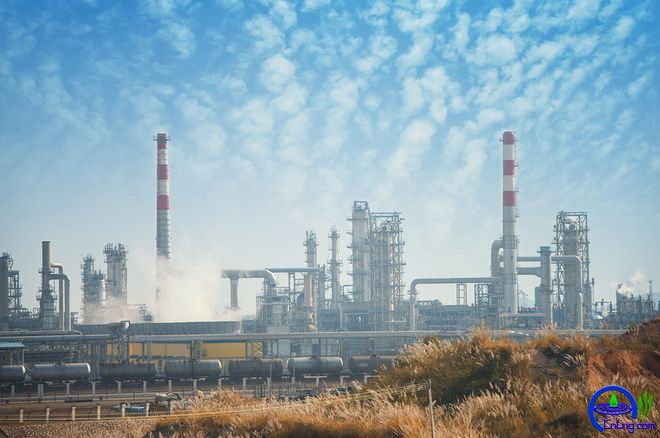免职声明:本网站为公益性网站,部分信息来自网络,如果涉及贵网站的知识产权,请及时反馈,我们承诺第一时间删除!
This website is a public welfare website, part of the information from the Internet, if it involves the intellectual property rights of your website, please timely feedback, we promise to delete the first time.
电话Tel: 19550540085: QQ号: 929496072 or 邮箱Email: Lng@vip.qq.com
摘要:海关总署近日公布的数据显示,2023年中国LNG(液化天然气)进口量达7132万吨(约984亿立方米),同比增长12.6%,再次超越日本,成为全球最大LNG进口国。中国石油集团经济技术研究院日前发布的《2023年国内外油气行业发展报告》(以下简称《报告》)数据显示,2023年L..
|
海关总署近日公布的数据显示,2023年中国LNG(液化天然气)进口量达7132万吨(约984亿立方米),同比增长12.6%,再次超越日本,成为全球最大LNG进口国。
随着LNG进口能力加速释放,各梯队进口商也各显神通,规模快速增长的同时,梯队间战略布局逐渐明朗。 调峰能力渐强 《报告》显示,2023年,我国LNG进口增速由负转正,现货增加约70亿立方米,同比增长27%。从来源看,进口LNG主要来自俄罗斯、卡塔尔等国家。 LNG进口量增加的同时,新增LNG接收能力也创历史最高纪录。2023年,全国新建4座LNG接收站,扩建2座,合计新增LNG接收能力1880万吨/年。截至2023年底,全国已投运LNG接收站28座,总接卸能力达1.16亿吨/年。 “随着进口量增长和接收能力不断提高,LNG进口设施建设灵活,逐渐成为调峰保障主力。”隆众资讯天然气分析师孙傲雪说。 “‘十三五’以来,国家大力推动LNG调峰保供,LNG市场蓬勃发展,开放化程度高,吸引了一大批国有和民间资本注入。尤其是国家管网集团成立后,第三方窗口期租赁服务为LNG市场增添了活力。”孙傲雪解释,“随着‘十三五’期间审批通过的LNG接收站近年接连投运,LNG进口能力快速释放,近五年年均复合增长率达10.8%。” 相对于LNG接收站的灵活性而言,敷设进口天然气管道则困难重重。“首要因素是建设进口天然气管道需要多个国家协作,受国际政治格局影响较大。同时,敷设天然气管道成本高、利润回报周期长,对想要参与其中的资本方提出更高要求,2023年管道气进口能力为1089亿立方米,约占全国进口能力的36%。”孙傲雪说。 梯队间布局明朗 《报告》指出,2023年全国进口LNG企业多达12家,同比新增4家,其中新天等企业为首次进口,进口主体不断多元化。 “从‘三桶油’来看,其战略重心逐步由进口商向国际贸易商转移。在俄乌冲突影响下,亚欧国际套利窗口开启,长协转卖带来一定利润,同时出于对资源供应越来越充裕的预判,‘三桶油’近年新签长协逐步转变为FOB模式(离岸价),便于在国际市场转卖。”一位天然气行业人士说。 与此同时,第二梯队进口队伍逐步扩大,新增新天、北京燃气、广州燃气、浙能、佛山燃气和香港LNG等新进口商,其投运接收站逐步上马,为进口提供了强有力的基础设施支持。“以上新增进口商2023年进口量170.61万吨,占全国液态进口市场总量的2.38%。”孙傲雪告诉《中国能源报》记者。 《报告》也显示,第二梯队进口队伍LNG接收能力占比25%,同比大幅提升10个百分点。 “不过,由于目前进口成本难以传导至下游,也在一定程度上限制了新入进口商的进口。”孙傲雪说,“第三梯队进口商多为国内大中贸易商或有自有终端的大型用户,这部分用户普遍拥有较稳定的分销客户或终端,能够合理消化资源,但用户规模较小,多以窗口期或多方拼船购买资源为主。今年以来,已经进行资源进口的企业有山东奥德、京燃能源、深圳能源、华润燃气等。” 未来竞争或将加剧 《报告》数据显示,目前全国在建LNG接收站超过30座,建成后接收能力将超过2.1亿吨/年。中国海油、申能等企业新签LNG长协开始履约,将成为LNG进口增量的主要来源,预计全年LNG进口7711万吨(约1064亿立方米),同比增长8.1%。 今年,预计还有2座LNG接收站扩建项目投入运营,8座新增LNG接收站相继投产,并且多数项目将于年底投产,LNG接收能力将会达到17029万吨,较2023年提升4075万吨。此外,2023年新投运的4个接收站也将在2024年常态化运行,LNG进口量预期增幅较大,各进口商之间的竞争或将进一步加剧。 “在接收站建设如火如荼、接收能力不断提高和市场竞争不断加剧的当下,行业向上发展的同时也不能忽视价格管理和服务质量。”上述天然气行业人士说。 据了解,目前多地正加强 LNG 接收站气化服务价格管理。其中,海南省发布《关于加强进口液化天然气接收站气化服务价格管理的通知》,山东省发布《关于明确LNG接收站气化服务价格的通知》,广西壮族自治区发布《关于加强进口液化天然气接收站气化服务价格管理的通知》,广东省发布《进口液化天然气接收站气化服务价格管理办法》,明确LNG接收站汽化服务价格。 Data released recently by the General Administration of Customs show that in 2023, China's LNG (liquefied natural gas) imports reached 71.32 million tons (about 98.4 billion cubic meters), an increase of 12.6%, once again surpassing Japan to become the world's largest LNG importer. The "2023 Domestic and Foreign oil and Gas Industry Development Report" (hereinafter referred to as the "Report") data released by the Economic and Technological Research Institute of China Petroleum Group shows that LNG imports in 2023 accounted for 59.4% of the country's natural gas imports, up 1.2 percentage points from the previous year. The new LNG receiving capacity reached a record high, and the development momentum of storage and transportation was good. With the accelerated release of LNG import capacity, the echelon importers have also demonstrated their unique abilities, while the scale has grown rapidly, the strategic layout of the echelon has gradually become clear. The capacity of peak load balancing is gradually strengthened "Report" shows that in 2023, China's LNG import growth rate from negative to positive, spot increase of about 7 billion cubic meters, an increase of 27%. From the source point of view, imported LNG mainly from Russia, Qatar and other countries. The increase in LNG imports was accompanied by a record increase in new LNG receiving capacity. In 2023, the country will build four new LNG receiving stations and expand two, with a total new LNG receiving capacity of 18.8 million tons/year. By the end of 2023, 28 LNG receiving stations have been put into operation nationwide, with a total handling capacity of 116 million tons/year. "With the growth of imports and the continuous improvement of receiving capacity, the construction of LNG import facilities is flexible, and it has gradually become the main force of peak regulation." Longzhong information gas analyst Sun Aoxue said. "Since the '13th Five-Year Plan', the state has vigorously promoted LNG peak regulation to ensure supply, and the LNG market has developed vigorously with a high degree of openness, attracting a large number of state-owned and private capital injections. Especially after the establishment of the National Pipeline Network Group, the third-party window leasing service has added vitality to the LNG market." Sun Aoxue explained, "With the LNG receiving station approved during the 13th Five-Year Plan period in recent years, the LNG import capacity has been rapidly released, and the compound annual growth rate in the past five years has reached 10.8%." Compared with the flexibility of LNG receiving stations, it is difficult to lay imported natural gas pipelines. "The primary factor is that the construction of imported natural gas pipelines requires the cooperation of many countries and is greatly affected by the international political pattern." At the same time, the high cost of laying natural gas pipelines and the long profit return cycle put forward higher requirements for the capital parties who want to participate, and the pipeline gas import capacity in 2023 will be 108.9 billion cubic meters, accounting for about 36% of the national import capacity." Sun Aoxue said. The echelon layout is clear The report pointed out that in 2023, there are as many as 12 LNG importing enterprises in the country, with 4 new ones added year-on-year, among which Xintian and other enterprises are imported for the first time, and the import subjects are constantly diversified. "From the perspective of 'three barrels of oil', its strategic focus has gradually shifted from importers to international traders." Under the influence of the conflict between Russia and Ukraine, the international arbitrage window in Asia and Europe has opened, and the resale of the Long Association has brought certain profits. At the same time, due to the anticipation of the increasingly abundant supply of resources, the newly signed Long Association of "three barrels of oil" has gradually changed to the FOB model in recent years, which is convenient for resale in the international market. "A natural gas industry source said. At the same time, the second-tier import team has gradually expanded, and new importers such as Xintian, Beijing Gas, Guangzhou Gas, Zheneng, Foshan Gas and Hong Kong LNG have been added, and their receiving stations have been gradually put into operation, providing strong infrastructure support for imports. "The above new importers will import 1.7061 million tons in 2023, accounting for 2.38% of the total liquid import market in the country." Sun Aoxue told "China Energy News" reporter. The report also shows that the LNG receiving capacity of the second tier import team accounted for 25%, a significant increase of 10 percentage points year-on-year. "However, it is difficult for import costs to be transmitted downstream at present, which also restricts imports by new importers to some extent." Sun Aoxue said, "The third tier of importers are mostly domestic large and medium-sized traders or large users with their own terminals, this part of the users generally have a more stable distribution customers or terminals, can reasonably digest resources, but the user scale is small, mostly in the window period or multi-party ship purchase resources." So far this year, companies that have imported resources include Shandong Aode, Jinghan Energy, Shenzhen Energy, and China Resources Gas. Competition may intensify in the future According to the report, there are currently more than 30 LNG receiving stations under construction in the country, and the receiving capacity will exceed 210 million tons/year after completion. Cnooc, Shenneng and other enterprises signed the new LNG long association began to perform, will become the main source of LNG import increase, is expected to import 77.11 million tons of LNG in the year (about 106.4 billion cubic meters), an increase of 8.1%. This year, it is expected that two LNG terminal expansion projects will be put into operation, eight new LNG terminals have been put into operation, and most projects will be put into operation by the end of the year, LNG receiving capacity will reach 170.29 million tons, an increase of 40.75 million tons from 2023. In addition, the four new receiving stations that will be put into operation in 2023 will also be in normal operation in 2024, and the LNG import volume is expected to increase greatly, and the competition among importers may be further intensified. "In the receiving station construction is in full flow, the receiving capacity continues to improve and the market competition continues to intensify, the industry can not ignore the price management and service quality at the same time." The natural gas industry said. It is understood that many places are strengthening the price management of LNG receiving station gasification services. Among them, Hainan Province issued the "Notice on Strengthening the Price Management of Gasification Service for Imported LNG Receiving Stations", Shandong Province issued the "Notice on Clarifying the Price of Gasification Service for LNG Receiving Stations", and Guangxi Zhuang Autonomous Region issued the "Notice on Strengthening the price management of Gasification Service for Imported LNG Receiving Stations". Guangdong Province issued the "Administrative Measures for the Price of Gasification Service at Imported Liquefied Natural Gas Receiving Stations" to clarify the price of vaporization service at LNG receiving stations. |




 中国石油集团经济技术研究院日前发布的《2023年国内外油气行业发展报告》(以下简称《报告》)数据显示,2023年LNG进口量占全国天然气进口量的59.4%,较上年上涨1.2个百分点。新增LNG接收能力创历史最高记录,储运发展势头良好。
中国石油集团经济技术研究院日前发布的《2023年国内外油气行业发展报告》(以下简称《报告》)数据显示,2023年LNG进口量占全国天然气进口量的59.4%,较上年上涨1.2个百分点。新增LNG接收能力创历史最高记录,储运发展势头良好。







